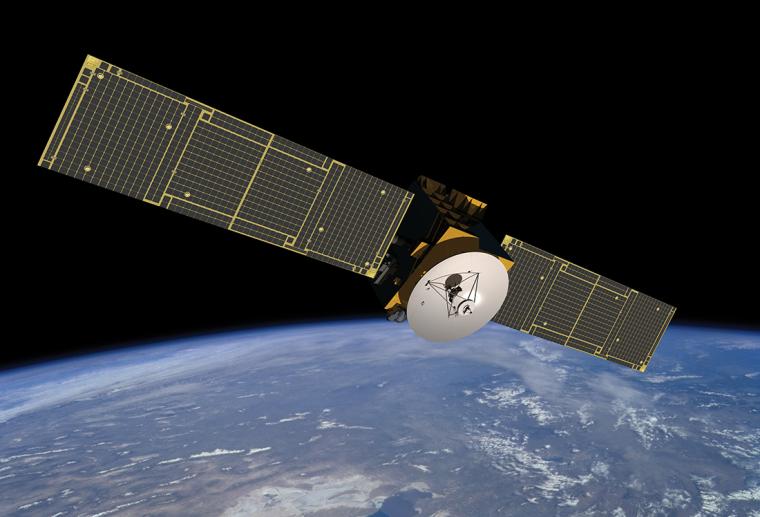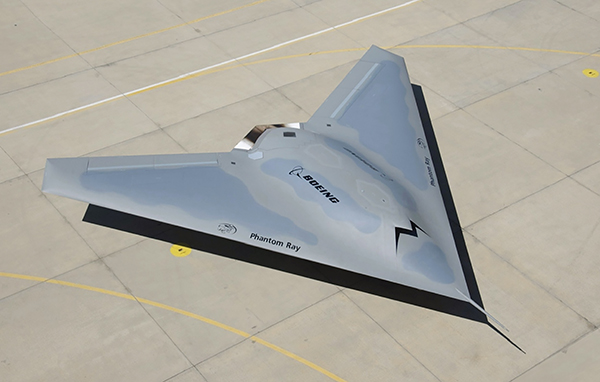
To gain a big picture view of the composition of the aerospace industry, it is worth looking at it by sector and examining current, prominent trends shaping industry performance. In this article, we will explore existing geographic concentrations and their implications on siting new aerospace facilities. To begin, we will offer an overview of what constitutes the aerospace sector. We will then disaggregate the industry into subsets, including aircraft manufacturing, aircraft engines, aircraft parts, satellites, unmanned aerial vehicles (drones) and maintenance and repair operations (MROs).
Industry Composition
Based on the North American Industry Classification System, the aerospace industry embraces multiple categories including Aerospace Product and Parts Manufacturing (NAICS 33641), Search, Detection and Navigation Instruments (334511), Support Activities for Air Transportation (4881, which includes Maintenance & Repair Operations, 48819) and Space Research and Technology (927).
Industry Trends
Revenue and profitability began to rebound in 2021. Air passenger travel has dramatically increased. Additionally, the air freight segment has displayed an upswing. Also, both defense and space force spending increased. Growth in emerging economies has been robust. These were the most prominent dynamics leading to the global aerospace market volume hitting $900 billion in 2022. Projected compounded annual growth is a healthy 5.7 percent.
Technology will also play a pivotal role in both growth and profitability over the near-to mid-term future. According to the California Manufacturing Network, prominent technology trends involve the following:
• Advanced materials. Research and development and innovation in advanced materials for lighter weight, more agile and less fuel-consuming aircraft.
• Smart automation and blockchain. The blockchain can arrange for the interchange of data among internal and external players throughout the entire value chain. Secure, auditable, traceable and shareable data can be distributed throughout the supply chain.
• More resilient and dynamic supply chains. Strategies include onshoring, vertical integration and better cyber defenses. OEMs and suppliers will leverage digital tools, including automating internal processes/streamlining workflows, implementing smart management systems and injecting more data analytics.
• Internet of Things (IoT), especially for predictive maintenance of parts and equipment. Adoption of this technology will introduce substantial efficiency throughout the supply chain.
• Artificial intelligence (AI) and machine learning to address complex problems with far greater efficiency. Coupled with IoT, AI is transforming both supply chain management and manufacturing processes.
The one common theme is digitalization as data analytics and innovation will become prevalent throughout all supply chain ecosystems.
A major challenge for aerospace-related companies throughout the supply chain is the recruitment and retention of talent. An ageing workforce and rising levels of turnover are affecting the industry. Automation and digital technologies require more advanced skills. We are witnessing talent shortages across skillsets from qualified entry-level assembly to skilled technician to engineering. Companies must invest more heavily in training, especially for upskilling. Other proactive measures will include apprenticeships/internships, workplace innovation/collaboration, career advancement, flexible benefits including support for childcare, market competitive compensation levels, company reputation/brand, and an effective supervisory development/selection process (covering both technical and soft skills). In choosing a new location, a premium will be placed on selecting areas where there is both significant talent pool depth and a robust talent pipeline.
Industry Sectors - Aircraft

The above growth factors apply to aircraft manufacturing. There is a significant amount of crossover within the aerospace industry as most companies engaged in aircraft production also manufacture components and provide services.
Aircraft manufacturing is indeed global, but the U.S. constitutes the industry’s major force. The global aircraft manufacturing sector generated approximately $414 billion in revenue in 2021. Sales are projected to increase 3.7 percent per annum throughout the remainder of this decade.
During this time frame, we expect to witness significant expansion of major assembly plants and the establishment of new facilities to manufacture specialty aircraft. Recent examples include:
• Airbus’ expansion of its assembly plant in Mobile, Alabama, adding 1,000 jobs.
• Archer Aviation choosing Covington, Georgia to produce the electric vertical takeoff/landing aircraft.
• Boom Supersonic establishing a plant in Greensboro, North Carolina to build supersonic jets, creating 1,750 jobs.
• Bombardier adding a new final assembly operation to its plant near the Toronto Airport.
• Kopter Group AG’s new helicopter plant in Lafayette, Louisiana, taking on the former Bell Helicopter facility and creating 120 jobs.
Aircraft Engines
The global aircraft engine market registered an estimated $79 billion in revenue at the end of 2022. The industry recorded a disastrous 2020 due to COVID-19, but as the pandemic approaches the rearview mirror, renewed growth could not come at a better time. For the remainder of the decade, annual growth is projected at 7.4 percent.
Demand for new aircraft is rising as air travel rebounds and air cargo freight is on the upswing. Aircraft engines with higher efficiency, compact size and lighter weight comprise the strongest engine demand. Consequently, as engine manufacturers adopt advanced production techniques such as additive manufacturing, we foresee notable site selection activity in the industry. This activity will embrace both on-site expansion and the location of new manufacturing plants. Recent examples include:
• GE (jet engines) in Lafayette, Indiana
• Honeywell’s expansion of its Phoenix, Arizona plant (engines for the U.S. Army’s Chinook helicopters)
• Pratt & Whitney in Asheville, North Carolina (aircraft engine parts)
Aerospace Parts
Excluding engines, the global aircraft parts market had global revenue of approximately $529 billion in 2022. Projected annual growth will be approximately 7 percent. Underlying forces contributing to solid growth forecasts for the aerospace parts sector mimic those for the engines sector.
Extensive technological change such as additive manufacturing and blockchain technology are injecting both cost savings and production efficiencies for parts suppliers. One significant restraint facing this sector is a labor shortage. This shortfall could impede the ability of suppliers to meet new orders in a timely fashion. Consequently, we will likely witness realignment in the facility footprint of many companies which could entail either relocation or the establishment of new operations in more favorable labor markets.
Thus, WDG Consulting believes there will be a moderately high level of location activity within the aircraft parts industry. A few recent examples include:
• Arcturus Aerospace’s relocation from California to Little Rock, Arkansas (machine parts).
• Barns Aerospace’s expansion (precision machine components) in West Chester, Ohio.
• Saab (airframe sections) in Lafayette, Indiana.
Satellites
The satellite industry reached $22.7 billion in 2022. It was one of the few aerospace sectors that saw growth during the height of the COVID pandemic in 2020, with a 1.4 percent growth rate. Robust growth is forecast for the next few years (averaging 10.6 percent per annum), with revenue topping $390 billion by 2028.
Given an insatiable demand for stronger digital connectivity, space activities by both governments and private enterprises will continue to ascend. Demand for high coverage satellite networks emanates from a variety of end users including military applications, imagery, weather forecasting, visual media, mobile communications, science and human exploration. Consequently, the number of satellite launches will markedly increase for the remainder of this decade.
A substantial volume of new production capacity will translate into a surge of location activity within the satellite industry. The highest rates of growth will be in the small satellite segment (those weighing less than 1,100 pounds). Consider a few recent examples:
• Boeing’s (small satellites) new factory in El Segundo, California
• Northrop Grumman’s (small satellite) manufacturing expansion in Gilbert, Arizona
• Raytheon’s expansion in Tucson, Arizona
• Terran Orbital’s new satellite manufacturing facility at Florida’s Space Coast
• York Systems’ (small satellites) “mega” manufacturing facility in Denver, Colorado
Unmanned Aerial Vehicles
An unmanned aerial vehicle is an aerial transportation medium that operates without on-board crew or passengers, guided by remote control, autonomously or both. UAV comprises the next generation of aircraft technology for surveillance, assessment, logistics and photography. The growing adoption of smart technology for such activities on several fronts will boost demand for UAVs (also referred to as drones) in sectors such as military/defense, agriculture, civil/commercial, logistics/transportation, healthcare, construction, mining and possibly retail.
Industry revenues totaled $26 billion in 2022. Forecasted annual growth is close to eight percent.
WDGC believes there will be a significant number of new drone manufacturing plants established over the forthcoming years. Recent examples are listed next.
• Anduril’s new plant in Atlanta, Georgia
• Aquiline Drones’ new plant in Hartford, Connecticut
• Boeing’s expansion in Metro St. Louis, Missouri
• Northrop Grumman’s expansion in Moss Point, Mississippi
• Strix Drones’ (Israeli) new operation in Dayton, Ohio
• Teal Drones’ new operation in Salt Lake City, Utah
Maintenance Repair Operations (MROs)
The global MRO market recorded sales of about $79 billion in 2022. Annual growth is projected to average 5.5 percent for the remainder of this decade.
Three segments comprise this industry: airlines, OEMs and independents. Airlines will continue outsourcing MRO activities, which will benefit both OEMs and independents. The latter should experience the highest growth due to cost and flexibility advantages. Furthermore, the rebound in air traffic and ever-increasing emphasis on safety and efficiency will also fuel growth. It is anticipated to have strong location activity, both for new and expanding operations. New MROs established include the following:
• Air Transport Components in Tulsa, Oklahoma
• Boeing in Jacksonville, Florida
• Gulfstream in Phoenix, Arizona
• MHIRJ in Central Georgia
• PHI (Petroleum Helicopter International) in Lafayette, Louisiana
• Sierra Nevada Corp. in Dayton, Ohio
• Stevens Aerospace in Macon, Georgia and Smyrna, Tennessee
• ST Engineering in Pensacola, Florida
• United Airlines in Tampa, Florida
Key Siting Factors

Aerospace operations have a notable presence in multiple states; however, the industry does display agglomeration tendencies. Nationally, the industry employs approximately three-quarters of a million workers. States with the greatest employment concentration tend to have an aircraft assembly presence. The states with the highest industry employment include California (119,800), Texas (77,600) and Washington (74,700) followed by Florida (58,700), Arizona (39,000) and Connecticut (30,800).
In terms of future site selection across industry subsets, a noticeable proportion will gravitate toward areas with a sizeable aerospace industry ecosystem, but this will not be a prerequisite for all companies. Assembly plants can be located in areas without a well-established ecosystem provided that other requirements can be met, such as a deep labor pool, large-scale and ready-to-go sites, excess utility infrastructure, the presence of an engineering school, national recruiting appeal and extensive transportation resources.
Assembly plants over time create their own ecosystems (e.g., supplier base). Many tier-one suppliers will prefer to be within reasonable proximity of areas with an established aerospace presence. Some MROs also need to be close to customers. Satellite manufacturers often, but not always, prefer to locate near an industry presence. UAVs, some MROs and tier-2 and tier-3 component suppliers can often relax the aerospace proximity request. But again, the basics such as surplus labor market, available buildings or ready-to-go sites, colleges with advanced manufacturing and engineering programs (and, ideally, aerospace programs), reliable and moderately priced electric power, and good highway and air access must be in place.
For all players, the predominant dynamic on where to site new aerospace facilities embraces human resources. According to the Aerospace Industries Association (AIA), workforce challenges have a cascading effect on many companies within the industry. In assessing and selecting a location, tradeoffs will need to be weighed. For instance, companies may identify an area with a lower-cost, surplus labor market that lacks an available building. Is the extra time and cost associated with new construction justified, given a significant HR advantage?
Analyzing the Flight Path Ahead
The aerospace industry suffered through a precipitous decline in revenue and profitability during COVID-19, but at last, aircraft manufacturing is on the rebound. Consequently, the future looks bright throughout the supply chain including engines, components, satellites, drones, and MROs.
Digitization, additive manufacturing, artificial intelligence, cloud analytics and blockchain are transforming businesses in the aerospace sector. Lightweight and more fuel-efficient aircraft represent the future.
When siting a new facility within an industry ecosystem, beware of oversaturation from a labor market perspective. If an overheated market is rejected, then opt for another area that features the basics for successful operation, including reasonable access to the customer base, utility infrastructure, available sites/buildings and fast track construction and permitting.
The industry will display strong location activity in the foreseeable future. To have confidence that a chosen location will maximize the success of the business, a structured analytical process must be followed. T&ID
